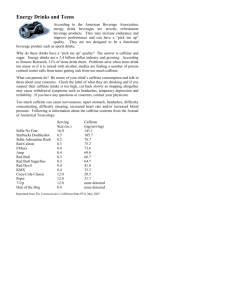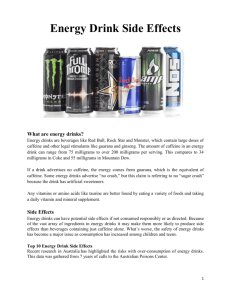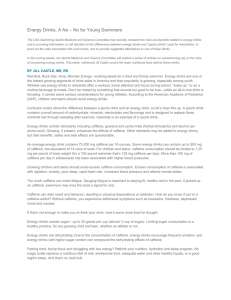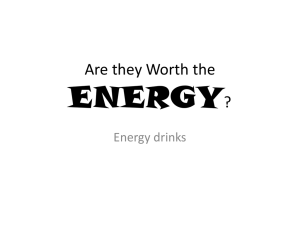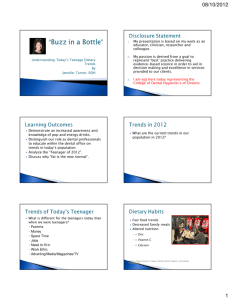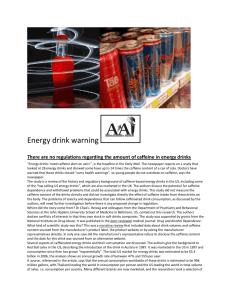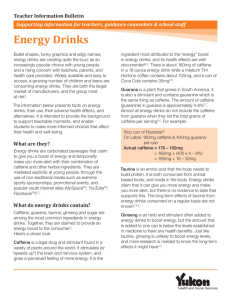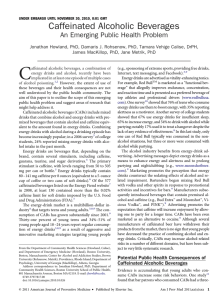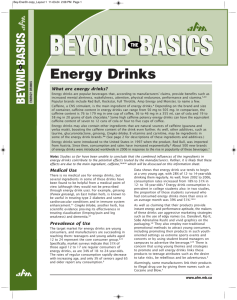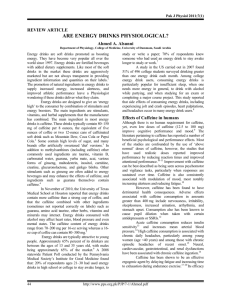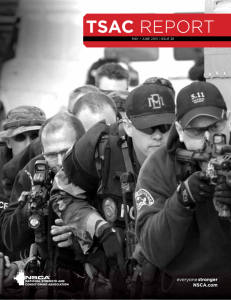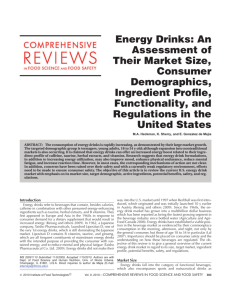What spinach did for Popeye, Red Bull can do
advertisement
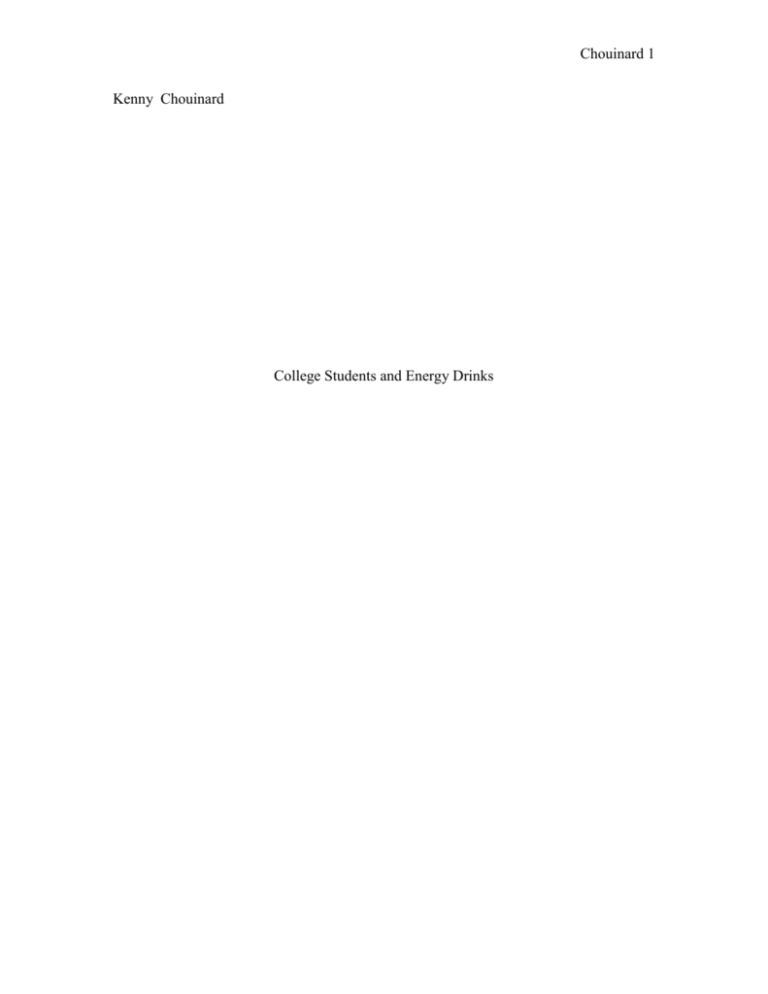
Chouinard 1 Kenny Chouinard College Students and Energy Drinks Chouinard 2 College students and energy drinks College students often deprive themselves of the seven to eight hours of sleep their bodies require, and replace that with four to five hours of sleep and a mixture of caffeinated beverages. In fact the average college student consumes 3+ caffeinated beverages a day, including some they do not realize. The obvious drink choices of coffee and soda are clearly labeled with their proven pick me up ingredient. However there is a new product on the market that contains more caffeine then both of these products. Energy drinks burst on the scene in the United States about five years ago pushed with such marketing slogans as "faster, stronger, smoother, and longer“ for ”the ultimate adrenaline rush.” (Olivero) What spinach did for Popeye, Red Bull can do for the active person, or so they claim. Improved performance, especially during stress or strain, increased endurance, improved reaction speed, in addition to stimulating metabolism are all claimed benefits of drinking Red Bull and its energy drink brethren. Primarily targeting youth culture, these brands have developed a marketing campaign that is almost impossible to miss. Under the guise of a vitamin and supplement crazed society, who is always looking for that extra edge in order to get ahead, these cleverly concocted brands have been able to come in and consume almost 5% of the already enormous beverage market. Typically selling at a store for about $2 a pop, the drinks racked up $3.5 billion in retail sales in 2005, up from $2 billion the previous year, according to trade publication Beverage Digest. Primarily focused on music and alternative sports, energy drink brands are marketing their product as a drink that should Chouinard 3 replace water and sports drinks, such as Gatorade, in everyday lives. In addition to the active lifestyle, these drinks have also flooded the club and bar scene. Often used as a mixer, it is a common misconception that one can hold off the effects of alcohol by mixing it with energy drinks. Margulies warns, “Studies indicate that while people may perceive that they are more alert and coordinated, they are actually no less impaired than if they'd not had the energy drink.” This doesn’t mean that a Jaeger bomb is more dangerous than a jack and coke; it just means that it’s still an alcoholic beverage, capable of impairing one’s judgment. The problem is that the majority of the drinks effects come from extremely high levels of caffeine. Even though the packages are filled with crazy sounding ingredients such as Taurine, Guarana, excessive levels of B vitamins, and Glucuronolactone, a form of sugar, they often mask the fact that they contain such high levels of caffeine. In fact some drinks can contain up to three times the amount of caffeine then one cup of coffee. The concentrated nature of these drinks also makes them less than ideal to take as a sports drink during exercise. It works much better as a stimulant 30 minutes before a workout. In other words, don't put Red Bull in your water bottle instead of, say, Gatorade, as you may find it upsets your stomach, it won't hydrate or refresh you as effectively if that's the case. Diluting it 50 percent by adding one part water may work; however, the beverage's lack of the electrolyte potassium may be problematic for intense exercise. For all its nutritional bells and whistles, Red Bull is still a soda, getting all 113 of its calories from sugar. These high levels of caffeine and sugar can cause serious health affects. Some of caffeine’s effects are evident such as an increase in heart rate, which creates the feeling of Chouinard 4 high energy. But serious headaches can occur if someone consistently consumes large amounts of caffeine each day and then withdraws. These headaches can last anywhere from one to five days, according to caryacademy.org. A caffeine overdose occurs once 750 mgs is consumed, which could be achieved by drinking six doses of caffeine and taurine as well. Another main ingredient in these drinks is guarana. “Guarana grows in South America. When the guarana bean is roasted it looks remarkably like a coffee bean.” (Mesely) "The extracts that come from guarana can get up to two to three times the amount of caffeine that coffee has, it's the richest-known source of caffeine known at this point,” a fact that many of these companies are not upfront with. The problem is that U.S. Food and Drug Administration has not defined what "energy" or "energizer" means, so there are no set ingredients or characteristics required for a beverage company to use those terms. The U.S. Food and Drug Administration also does not regulate or limit caffeine in energy drinks. Some countries do have such limits. In Australia, caffeine levels are restricted to 145 milligrams per liter. But here, beverages aren't even required to list the amount of caffeine in the product. (Olivero) Warning labels should accompany all caffeinated beverages, and nutritional labeling should be expanded to include the amount of caffeine per serving. Energy companies are most certainly aware of these problems, even though they are not openly claimed. Anyone who has been to a recent concert or sports event has probably seen their favorite musician or athlete drinking an energy drink after performing or competing. This is definitely clever marketing by these brands, making it seem ok to consume their product after or during some sort of physical activity and it works. However what the public doesn’t know is that these companies actually manufacture a Chouinard 5 special product just for their athletes or musicians. Monster Energy, one of the major players in the beverage game, actually bottles water into a package that looks exactly like the product they put on store shelves. This way they can get their marketing shot with out the spokesperson complaining or getting hurt. Good judgment should always be used when considering what to put into one’s body. Energy drinks are full of caffeine, which can harm your body, just the same as soda, coffee, and tea. They can cause health problems and even become addictive. It is for these reasons students should consume no more then 100mg of caffeine a day, limiting them to 1 to 2 drinks rather then the 3+ they currently consume. There are healthy alternatives to maintaining high energy levels, rather than consuming products to stay energized such as a good sleep pattern, stress management, a healthy diet and an exercise routine for providing someone with a steady level of energy.
